The Balcony Bug Hotel Project: How to Use Fall Garden Debris to Create a Winter Haven for Beneficial Insects
As the vibrant colors of your summer garden fade, you might think of fall as a time for clearing everything away. However, for the smart small-space gardener, autumn offers a golden opportunity. Instead of tossing dead plant stems and fallen leaves, you can transform them into a vital sanctuary for your garden’s best allies: beneficial insects. This project, creating a balcony bug hotel, provides a cozy winter retreat for helpful creatures and gives your garden debris a purpose, aligning perfectly with a low-maintenance, eco-conscious approach to gardening.
Imagine your balcony buzzing with ladybugs, lacewings, and solitary bees, all working tirelessly to keep pests in check and pollinate your plants. Building a simple bug hotel for your balcony is not just an enriching fall garden cleanup activity, it is a powerful step towards a healthier, more productive garden ecosystem, even in the smallest of spaces. This guide walks you through every step, from gathering materials to setting up a thriving home for your garden’s unsung heroes.
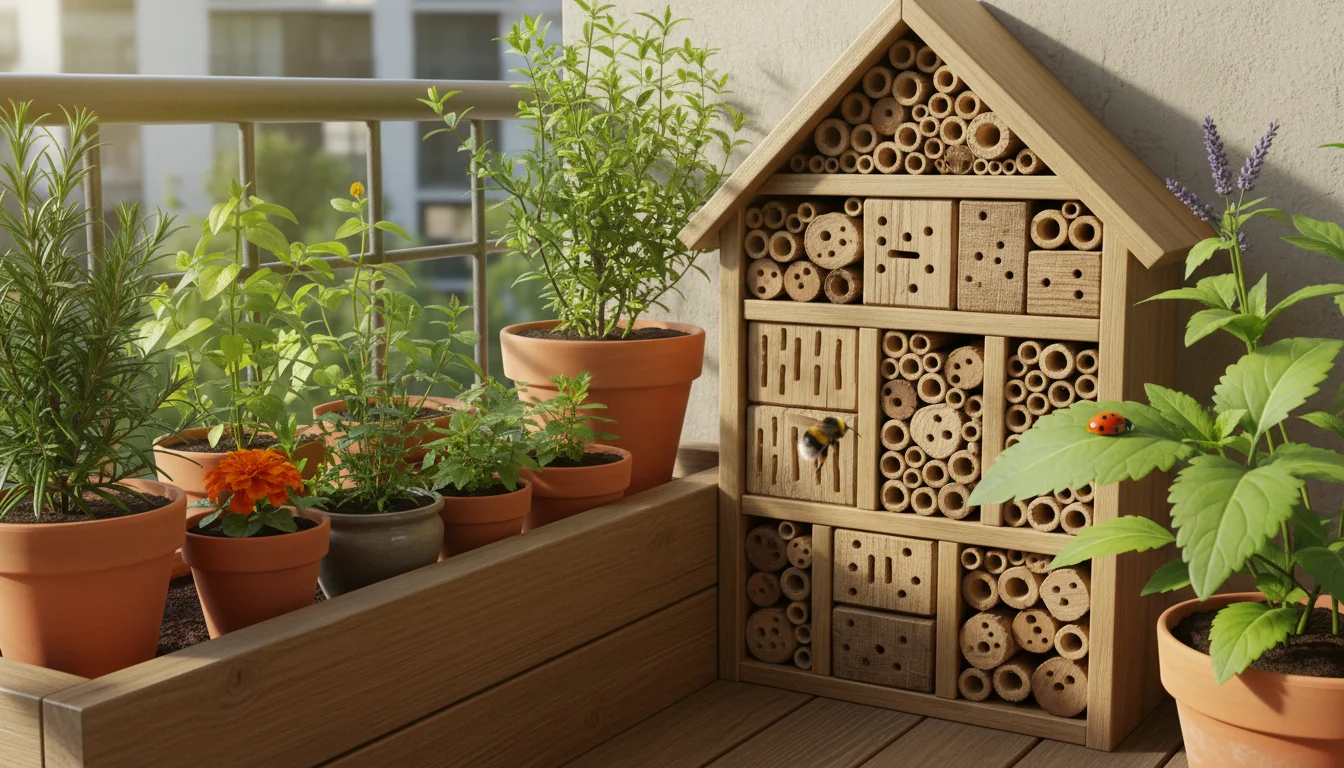
Why Your Balcony Needs a Bug Hotel: The Power of Beneficial Insects
In any garden, big or small, a delicate balance exists between pests and predators. Beneficial insects are the unsung heroes maintaining this balance. They tirelessly munch on aphids, mites, and other common garden adversaries, reducing the need for chemical interventions. For small-space gardeners, every square inch counts, and maximizing the natural pest control offered by these insects is invaluable. A bug hotel provides them with safe overwintering sites, encouraging them to stay in your garden year after year.
Consider the impact. A single ladybug can devour thousands of aphids in its lifetime. Lacewing larvae are voracious predators of soft-bodied insects. Solitary bees, while not pest controllers, are superb pollinators, boosting your fruit and vegetable yields. Attracting ladybugs to your garden, along with these other helpful species, means you are building a resilient ecosystem. Studies by university extensions, such as Penn State Extension, consistently show that diverse habitats attract a greater variety of beneficial insects, leading to healthier plant growth and reduced pest pressure.
Your balcony, often an isolated micro-environment in an urban landscape, can become an oasis. By providing shelter, you make your space more attractive to these tiny helpers who might otherwise struggle to find suitable places to survive the cold months. A bug hotel diy project turns your garden into a welcoming home, transforming discarded plant material into a functional, living piece of art.
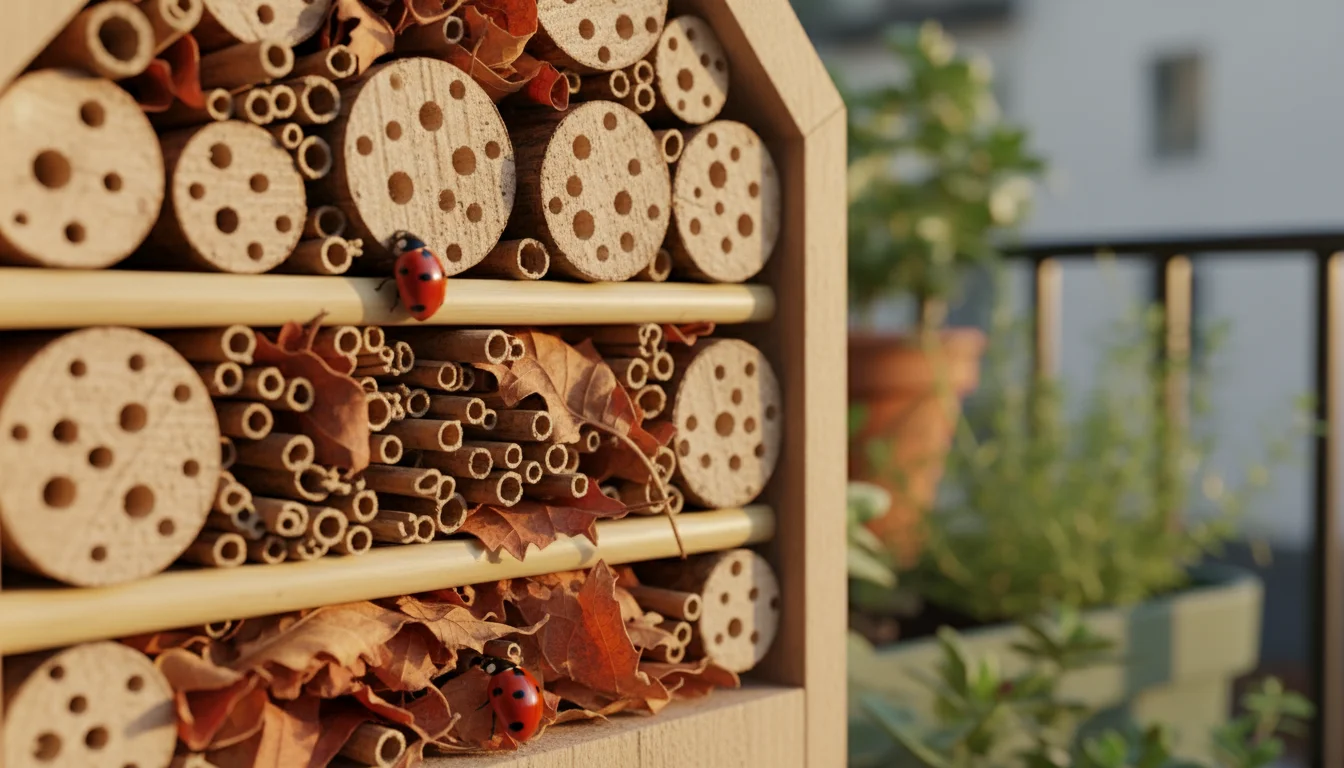
Understanding Your Guests: Who Lives in a Bug Hotel?
A bug hotel is more than just a pile of sticks, it is a carefully designed habitat mimicking natural nooks and crannies where insects seek shelter. Different materials attract different beneficial insects, providing homes for various life stages. Knowing your potential guests helps you tailor your hotel to their needs.
- Ladybugs (Coccinellidae): These iconic red and black beetles are aphid-eating machines. They seek sheltered spots to hibernate, often in clusters, under leaf litter or in hollow stems. Your bug hotel provides the perfect crevices for them to spend the winter.
- Lacewings (Chrysopidae): Both adult lacewings and their larvae are excellent predators. The adults are delicate, green, flying insects, and their larvae are known as “aphid lions” due to their insatiable appetites. They overwinter in sheltered, dry places.
- Solitary Bees (various species, e.g., Mason Bees, Leafcutter Bees): Unlike honeybees, solitary bees do not live in colonies. Females lay eggs in individual chambers, often in hollow stems or tunnels in wood. They are incredibly efficient pollinators, and a bug hotel with hollow tubes offers ideal nesting sites.
- Ground Beetles (Carabidae): These nocturnal predators patrol the garden floor, hunting slugs, snails, and caterpillars. They prefer damp, dark spaces under logs or stones.
- Spiders: While not insects, spiders are natural pest controllers. They appreciate sheltered corners and nooks to build their webs and find prey.
- Hoverflies (Syrphidae): The larvae of hoverflies feed on aphids, while the adults are important pollinators, often mimicking bees or wasps. They overwinter in sheltered plant debris or soil.
When you learn how to make a simple bug hotel for balcony spaces, you create a multi-story, multi-room dwelling. Each material you incorporate offers a specific type of shelter, ensuring a diverse range of beneficial insects finds a home. This diversity is key to a robust and healthy garden ecosystem.

Gathering Your Materials: Turning Fall Debris into Gold
The beauty of a bug hotel is its reliance on readily available, often discarded, natural materials. This project champions sustainability by repurposing what many gardeners typically remove during fall garden cleanup. Instead of sending these valuable resources to the compost bin or waste, you transform them into essential insect housing. Here’s what to gather:

Core Materials from Your Fall Garden Cleanup:
- Hollow Stems: Think sunflowers, coneflowers, sedum, bamboo canes, or any plant with a hollow central core. Cut these into various lengths, from 4 to 8 inches. These are crucial for solitary bees and provide excellent overwintering spots for ladybugs and lacewings. This addresses what to do with dead plant stems, giving them a new purpose.
- Dead Wood/Twigs: Small branches, twigs, or pieces of rotting wood offer nooks and crannies for beetles, spiders, and woodlice.
- Pine Cones: Their scales provide many small crevices, perfect for ladybugs, spiders, and lacewings to tuck themselves into.
- Loose Bark: Peeling bark creates sheltered layers, ideal for various insects seeking cover.
- Dried Leaves/Straw: These materials offer insulation and small spaces for overwintering insects like ladybugs.
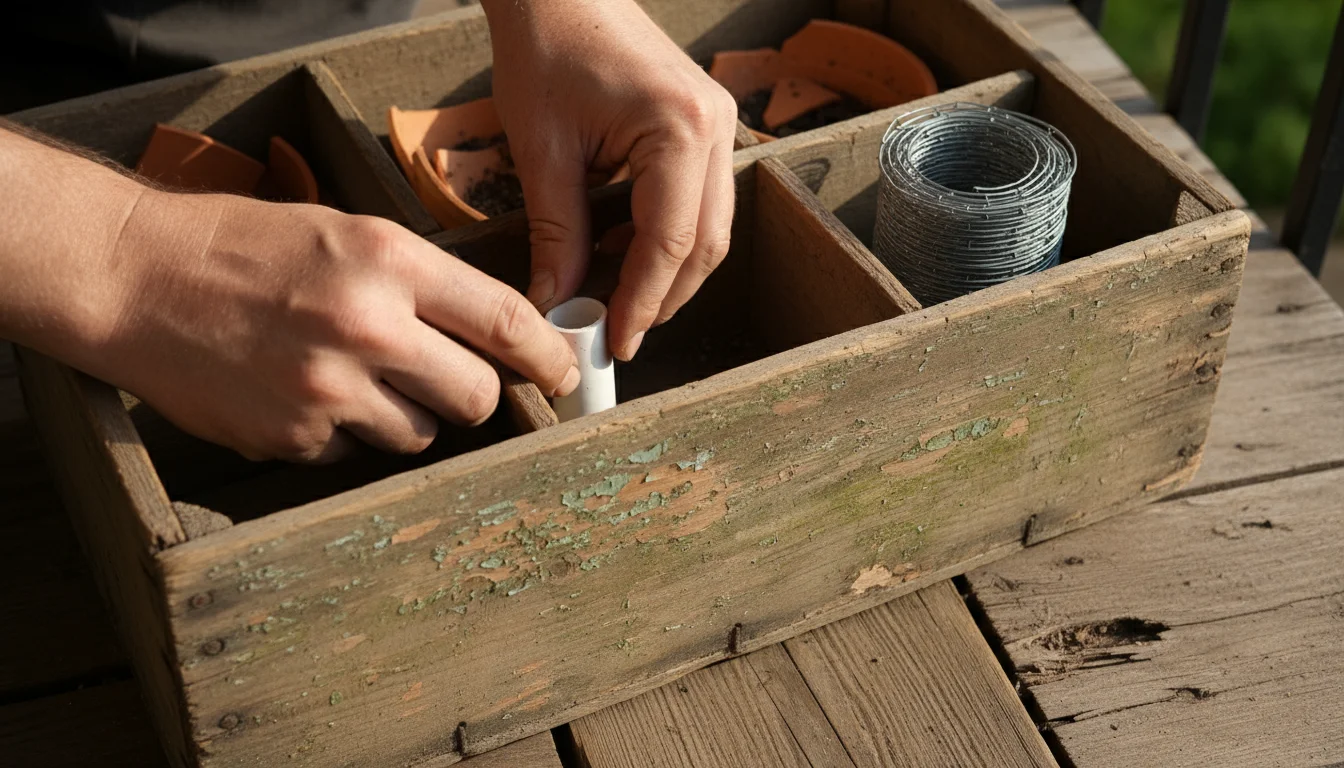
Container Options (The “Hotel” Structure):
- Upcycled Wood Crates: An old wooden crate offers a sturdy, multi-compartment structure.
- Terracotta Pots (broken or intact): Stacked or laid on their sides, they create tunnels.
- Plastic Bottles (cut and cleaned): Large plastic bottles, cut in half lengthwise, can serve as compartments when laid on their sides.
- Hardware Cloth or Mesh: Use this to create sections within a larger container or to hold materials in place.
- Wire Mesh Bins: A simple wire waste bin can be stuffed with materials.
- PVC Pipes (various diameters): Cut into segments, they form durable tubes for nesting materials.
Aim for a variety of textures and sizes. The more diverse your materials, the more types of beneficial insects you will attract. This hands-on bug hotel diy approach not only helps your garden but also reduces waste, a cornerstone of environmentally conscious gardening.
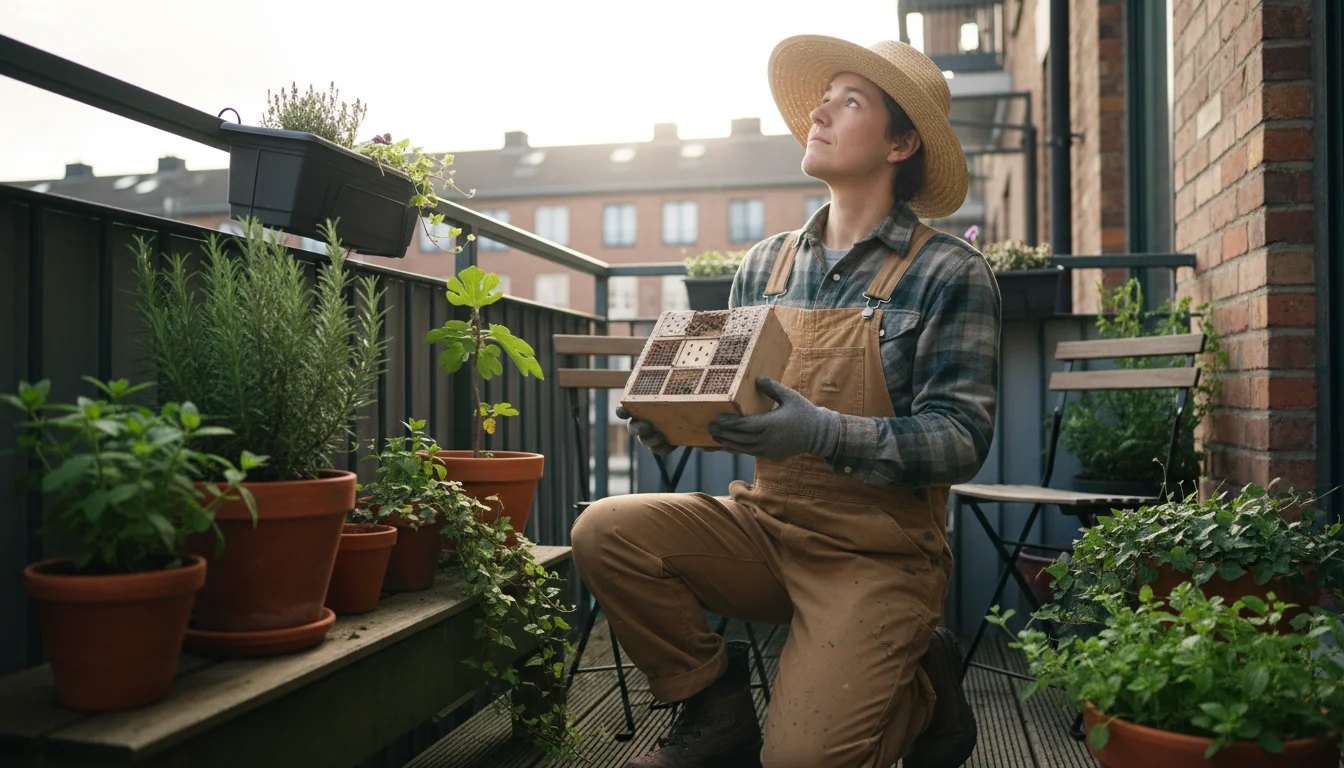
Choosing the Right Location and Container for Your Balcony Bug Hotel
The success of your balcony bug hotel depends significantly on its placement and the structure you choose. Even in a small space, you can optimize for insect comfort and safety.
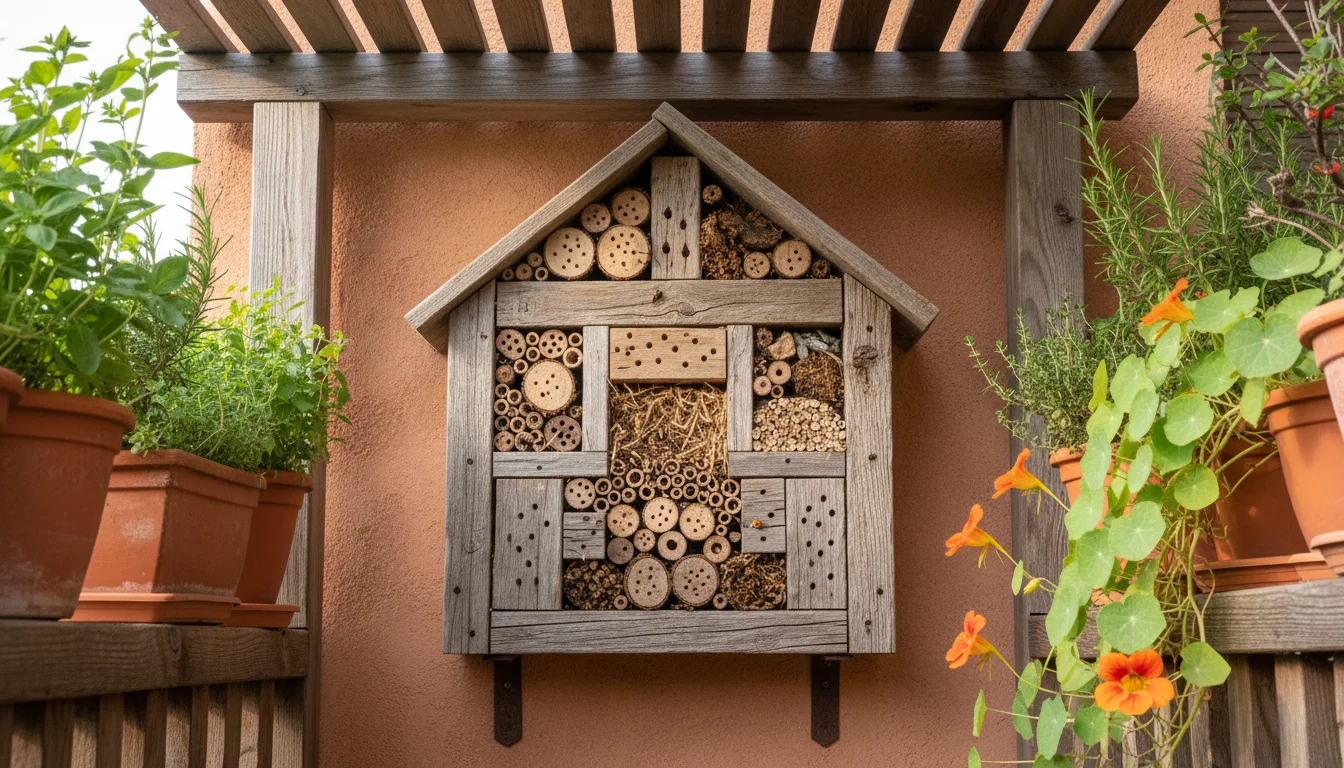
Location Considerations:
- Shelter from Rain: Insects do not appreciate soggy conditions. Place your hotel in a spot that receives some protection from heavy rain. An overhang, under a balcony roof, or against a sheltered wall works well. This prevents materials from rotting quickly and keeps inhabitants dry.
- Morning Sun: A location that receives morning sun allows the hotel to warm up quickly, encouraging insects to emerge and forage. Avoid intense, all-day direct summer sun, which can overheat the hotel, especially if it contains dark materials or is poorly ventilated.
- Stability: Ensure the hotel is stable and secure. High winds or accidental knocks should not dislodge it. Fasten it to a railing, wall, or place it on a sturdy surface.
- Proximity to Plants: Placing your bug hotel near your flowering plants, herbs, or vegetables makes it easier for beneficial insects to commute to their food sources and pollinate your garden. This reinforces the idea of attracting ladybugs to your garden directly where they are needed.
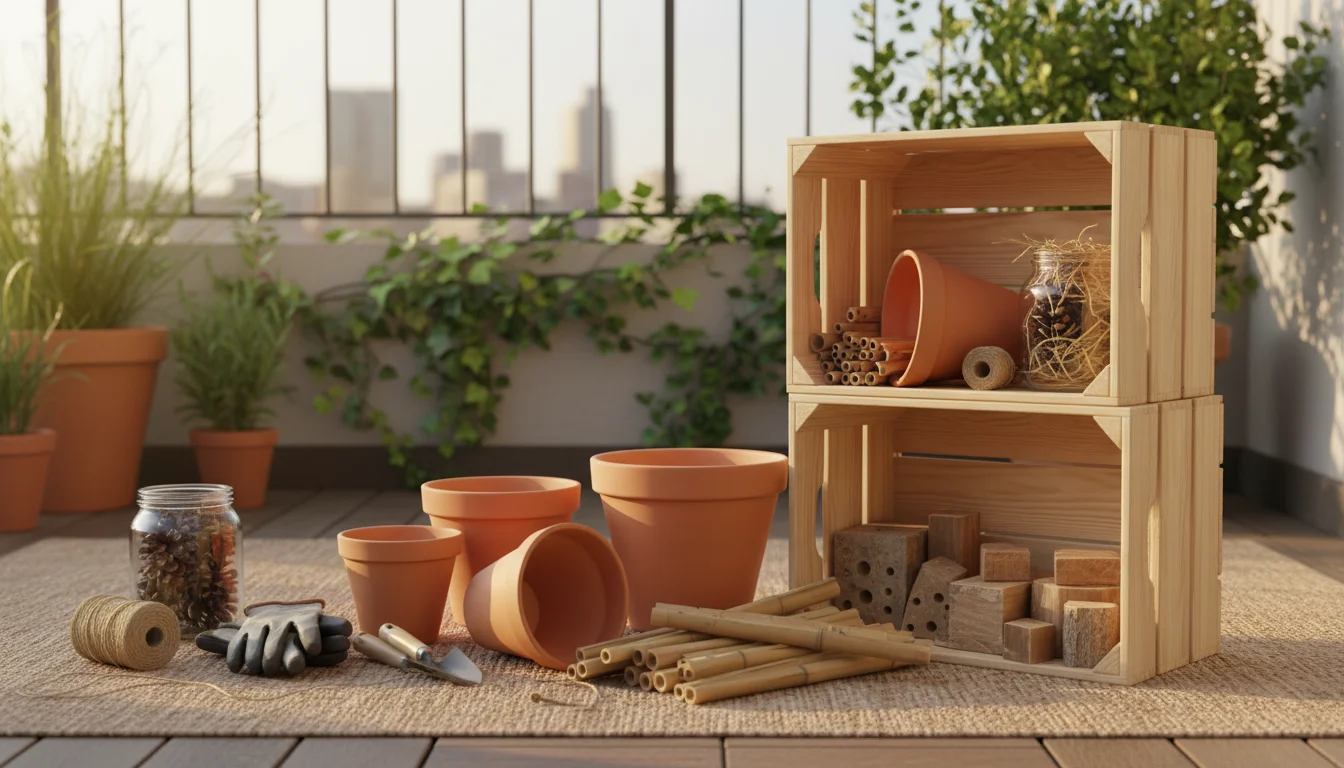
Container Design and Size:
For a balcony, compact and vertical designs often work best. You want a structure that is robust enough to hold materials but light enough to manage. Here are popular options for how to make a simple bug hotel for balcony spaces:
| Container Type | Advantages for Balconies | Tips for Use |
|---|---|---|
| Wooden Crates | Sturdy, natural look, easy to compartmentalize. | Stack multiple crates, secure with screws or zip ties. Line the back with wood or cardboard. |
| Stacked Terracotta Pots | Visually appealing, good drainage if open. | Vary sizes. Use strong adhesive or rebar through drainage holes for stability. Fill with different materials. |
| PVC Pipe Sections | Very durable, weather-resistant, easy to fill. | Use different diameters. Bundle and secure with wire, then stuff with hollow stems or rolled cardboard. |
| Upcycled Large Plastic Bottles/Jug | Lightweight, waterproof, repurposes waste. | Cut openings, secure to a wall. Stuff with materials. Ensure good ventilation. |
| Wire Mesh Basket/Bin | Excellent ventilation, allows for creative stuffing. | Line one side with cardboard or wood for a solid back. Stuff tightly with varied debris. |
The key is creating enclosed spaces with varying sizes of holes and tunnels, mimicking natural habitats. Remember, the goal is to make a cozy, sheltered home, not a leaky, exposed one. A well-chosen container and location ensure your beneficial insects thrive.

Building Your Balcony Bug Hotel: A Step-by-Step Guide
Building a bug hotel is a rewarding and relatively simple project. Follow these steps to construct an inviting haven for your beneficial insects.

Materials You Will Need:
- Your chosen container (wooden crate, terracotta pots, PVC pipes, etc.)
- Hollow stems (sunflower, bamboo, coneflower, sedum)
- Small pieces of dead wood, twigs
- Pine cones
- Loose bark
- Dried leaves, straw, or hay
- Scissors or pruning shears
- Gloves (optional, for handling prickly stems)
- Drill with small bits (for wood blocks, if using)
- Strong adhesive, zip ties, or wire (for securing structure, if needed)
- A saw (if cutting your own wood pieces)

Step-by-Step Construction:
- Prepare Your Container: If using a wooden crate, ensure it is clean and sturdy. If it has an open back, attach a piece of plywood or sturdy cardboard to create a solid backing. For terracotta pots, decide on your stacking arrangement. For PVC pipes, cut them into lengths and decide how to bundle or arrange them.
- Gather and Prepare Your Debris: This is where your fall garden cleanup truly shines.
- Hollow Stems: Cut stems into lengths that fit snugly within your container, typically 4 to 8 inches. Ensure the cuts are clean. Group stems of similar diameter together.
- Wood Blocks (Optional, but highly recommended): If you have small pieces of untreated wood (like offcuts from a fence post), drill holes of various diameters (3/32 to 3/8 inch) into the end grain, about 3-5 inches deep. These are perfect for solitary bees.
- Pine Cones, Bark, Twigs: Collect a good variety. Break larger pieces down to fit.
- Leaves/Straw: Ensure they are dry to prevent mold.
- Start Filling the Hotel: Begin arranging your materials inside the container. The goal is to create many different types of tunnels, crevices, and hiding spots.
- Back Layer: Start with some dried leaves or straw at the very back of your compartments to provide insulation.
- Hollow Stems: Tightly pack bundles of hollow stems into sections. Vary the diameters. Make sure the open ends face outwards. This is key for attracting solitary bees.
- Wood Blocks: Insert your drilled wood blocks with the drilled holes facing outwards.
- Pine Cones and Bark: Fill other sections with pine cones and pieces of loose bark. These create many small, irregular spaces.
- Twigs and Small Branches: Tuck these into gaps, creating more complex structures.
- Pack Tightly: Press the materials firmly into the container. Loose materials can shift, collapse, or blow away. A tightly packed bug hotel offers better insulation and stability for its inhabitants. Leave no large empty spaces.
- Secure the Structure: If using multiple containers or stacked elements, use strong adhesive, wire, or zip ties to secure them together. For example, if stacking terracotta pots, run a piece of rebar through the drainage holes for stability. If hanging, ensure all fixings are robust.
- Final Placement: Mount or place your completed bug hotel in your chosen sheltered location on your balcony, ensuring it is stable and protected from heavy rain.
Congratulations! You have just completed your bug hotel diy project. This simple act creates a vital resource, supporting beneficial insects through the winter and enriching your garden ecosystem for the coming seasons.
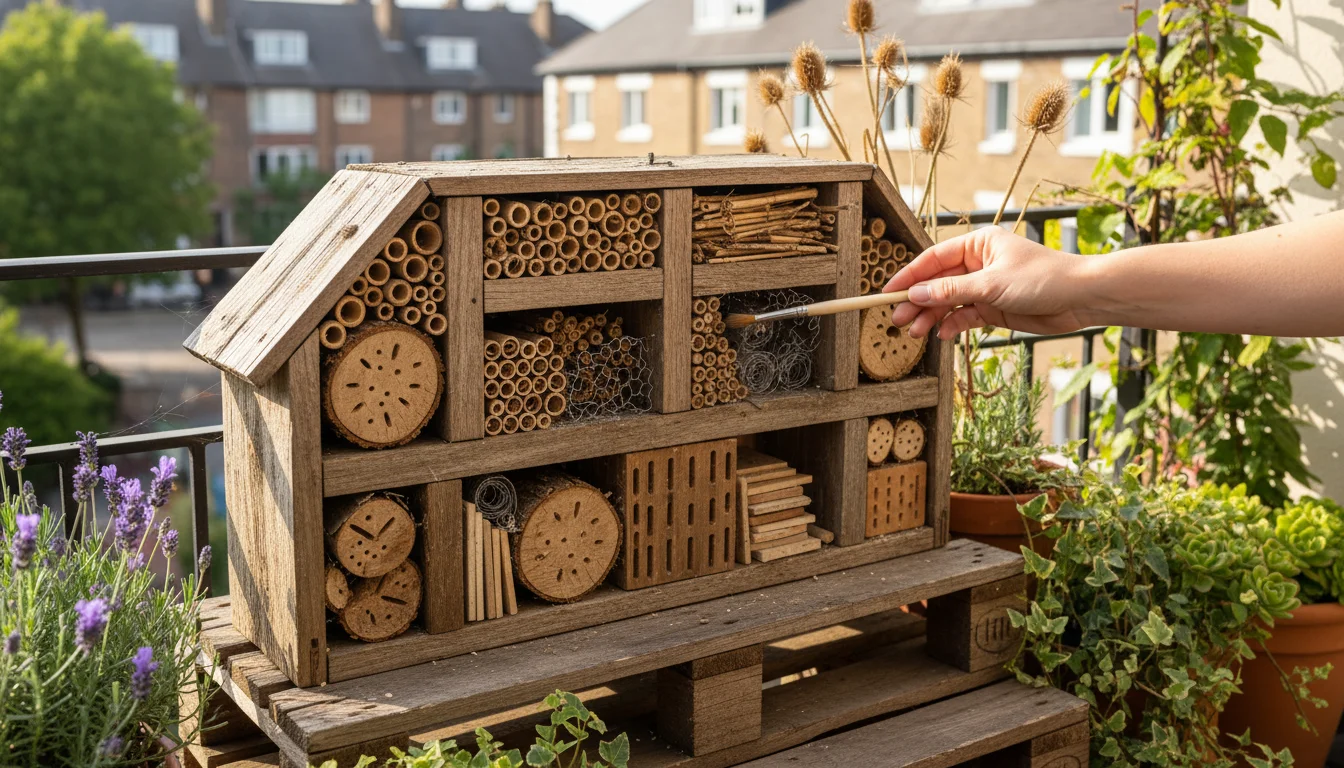
Maintaining Your Bug Hotel: Simple Care for a Thriving Ecosystem
A bug hotel is largely a low-maintenance feature, but a little care ensures it remains a healthy and inviting home for your beneficial insects. Proper maintenance prevents the buildup of mold or unwanted pests, and ensures your hotel remains effective year after year.
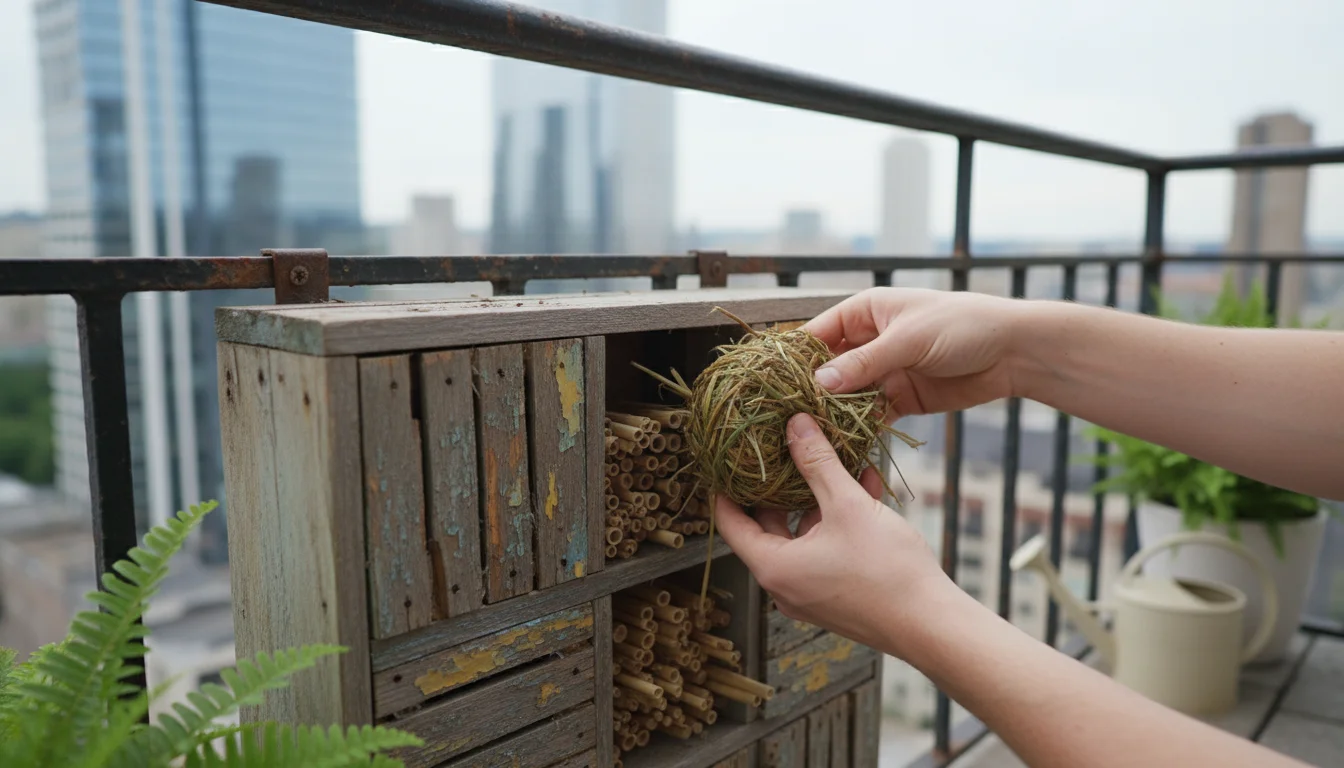
Annual Check-Up (Late Fall/Early Spring):
- Inspect for Damage: Check the structural integrity of your hotel. Has any part come loose? Does it need re-securing to your balcony railing or wall? Replace any broken components.
- Assess Material Degradation: Over time, some organic materials like straw or leaves will decompose. The hollow stems can become damp or rot. Inspect the materials for signs of excessive moisture, mold, or collapse.
- Partial Refresh: You do not need to replace all materials every year. However, if some sections look degraded or excessively damp, gently remove those materials. Replace them with fresh, dry fall garden debris. Focus on the softer materials first.
- Clean Blocked Tubes: Solitary bee nesting tubes sometimes become blocked or filled with debris other than cocoons. Gently clear these with a small stick or pipe cleaner if you see obvious blockages. Be cautious not to disturb any active residents.
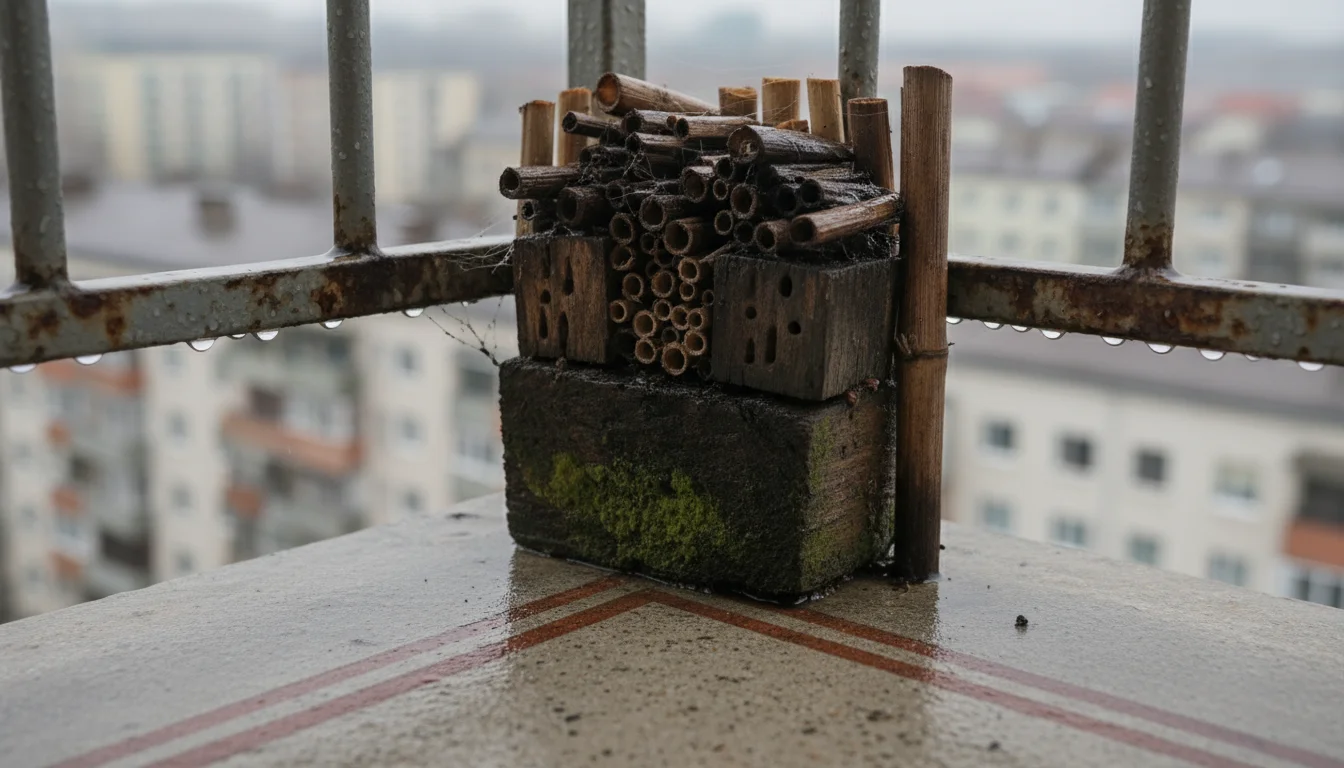
Mistakes to Avoid:
- Leaving it Permanently Wet: This is the biggest enemy of a bug hotel. Constant dampness leads to mold, fungal growth, and can harm the insects. Ensure your chosen location offers good rain shelter and that materials can dry out.
- Using Treated Wood: Never use chemically treated wood in your bug hotel. The chemicals can be toxic to insects. Stick to natural, untreated materials.
- Over-Cleaning: Resist the urge to “sterilize” your bug hotel. Insects leave behind signs of life, including old cocoons or frass (insect waste), which are natural. Excessive cleaning removes beneficial microorganisms and can disturb overwintering insects. A partial refresh every year or two is sufficient.
- Disturbing During Winter: Once insects have settled in for the cold months, avoid moving or dismantling the hotel. Let them rest undisturbed until spring.
- Using Too-Small Tubes: If your hollow stems are too narrow, solitary bees may not use them. Aim for a range of diameters, but ensure some are at least pencil-width for common solitary bees.
By following these simple maintenance tips, your bug hotel will provide a stable and inviting habitat for beneficial insects, becoming a reliable asset in your small-space garden for many seasons. This low-maintenance approach supports your eco-friendly gardening goals.
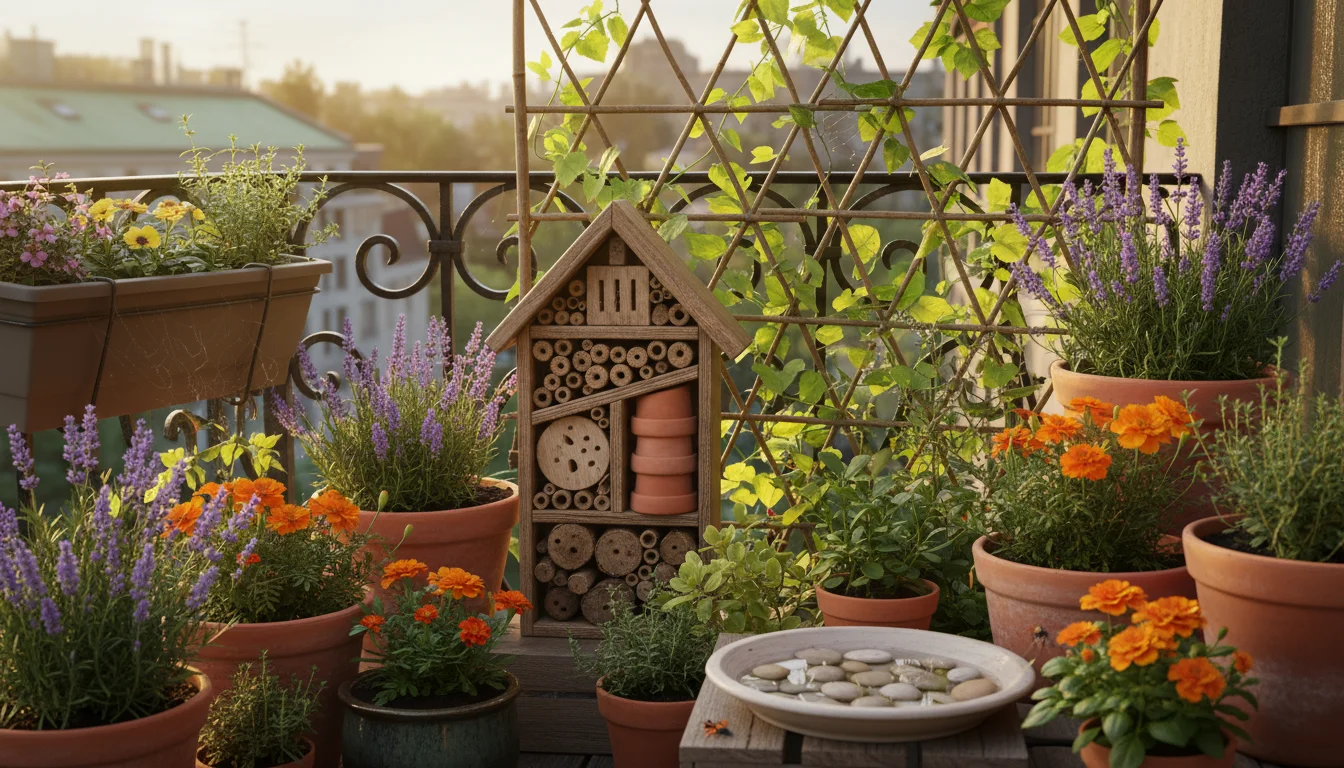
Beyond the Hotel: Creating a Year-Round Beneficial Insect Sanctuary
While your balcony bug hotel offers crucial winter shelter, creating a truly thriving ecosystem for beneficial insects involves more than just a place to sleep. It means providing food and water throughout the year. Consider your bug hotel as one piece of a larger puzzle, a central hub for your garden’s helpful inhabitants.
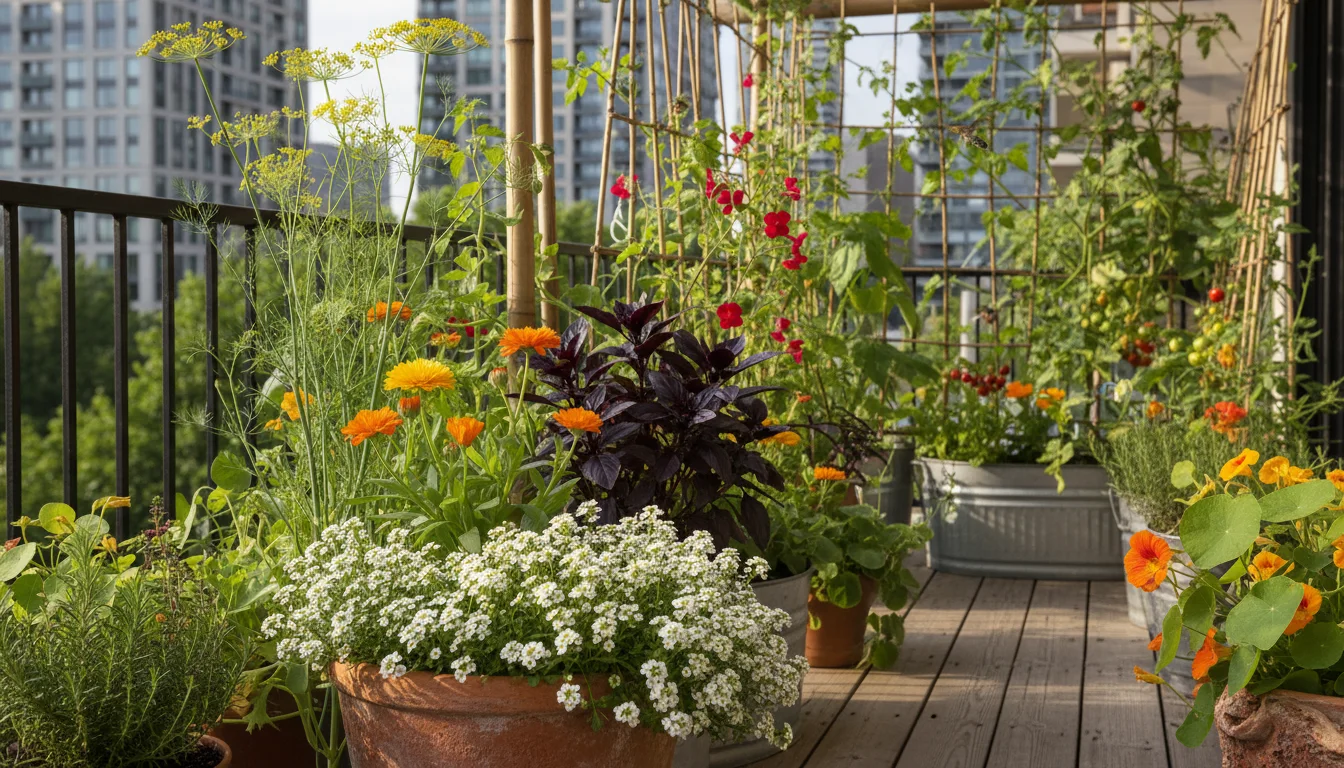
Food Sources (Nectar and Pollen):
Many beneficial insects, including adult ladybugs, lacewings, and hoverflies, feed on nectar and pollen. Planting a diverse array of flowers ensures a continuous food supply from spring through fall. Choose native plants whenever possible, as they are often best suited to local insect populations. Here are some excellent choices for small spaces, keeping in mind attracting ladybugs to your garden:
- Alyssum: Low-growing, produces tiny white flowers that attract a wide range of beneficials.
- Dill and Fennel: These herbs have umbrella-shaped flowers (umbels) that are a favorite of lacewings and hoverflies.
- Cilantro and Parsley (allowed to bolt): Similar to dill, their flowers are insect magnets.
- Marigolds: Bright flowers attract many beneficials, and some varieties even deter certain pests.
- Cosmos: Open, daisy-like flowers are easy for many insects to access.
- Sunflowers: Provide nectar and pollen, and their hollow stems become valuable bug hotel material later.
- Yarrow: A hardy perennial with flat-topped flower clusters, excellent for attracting a variety of insects.
- Pincushion Flower (Scabiosa): Offers a good landing platform and abundant nectar.
Planting in drifts, rather than single plants, makes your garden more visible and attractive to foraging insects. Focus on single-petal flowers over double-petal varieties, as the latter often make nectar and pollen inaccessible.
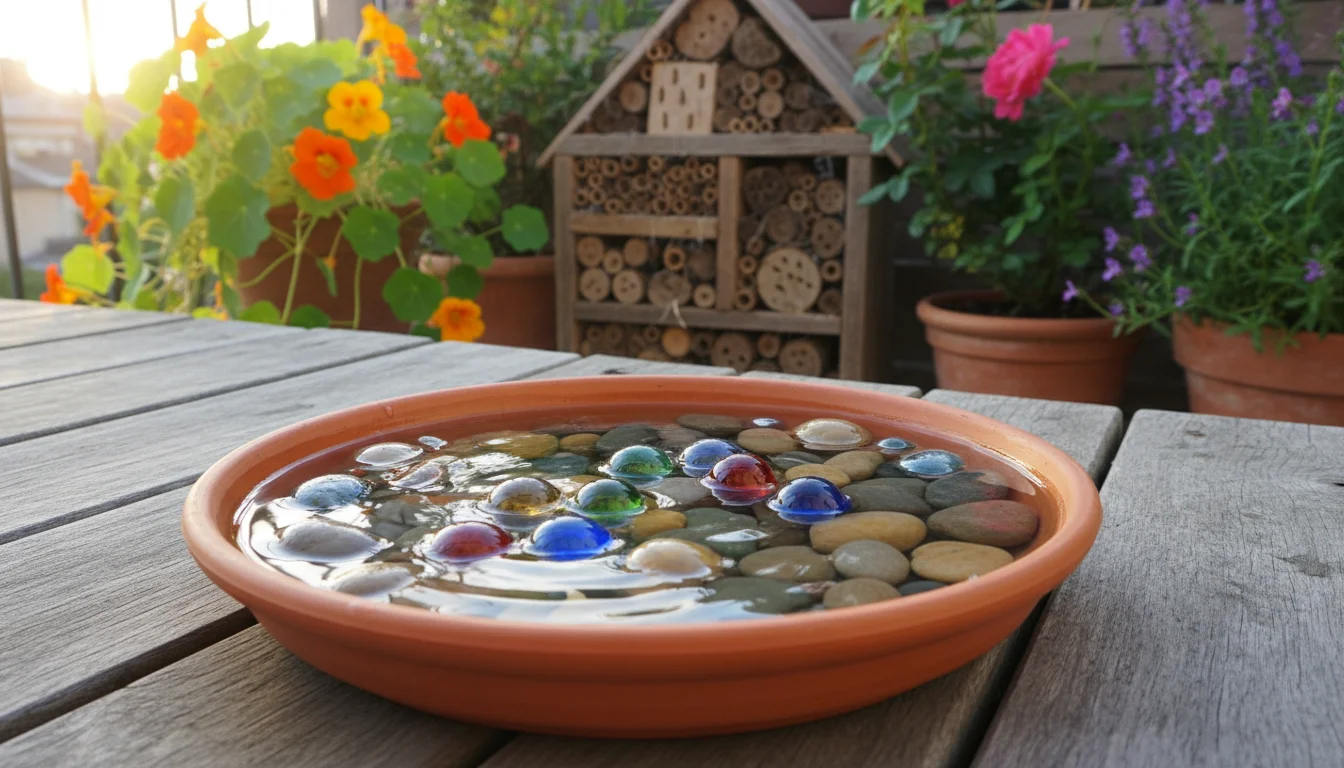
Water Sources:
Insects, like all living creatures, need water. A shallow dish filled with pebbles or marbles that stick out of the water provides a safe drinking spot, preventing insects from drowning. Place it near your bug hotel and plants.

Minimize Pesticide Use:
This is paramount. Even “organic” pesticides can harm beneficial insects. The ultimate goal of attracting beneficials is to create a natural pest control system. If you absolutely must use a pesticide, research its impact on non-target organisms and apply it very selectively, only to affected plants, and during times when beneficials are least active (e.g., late evening).
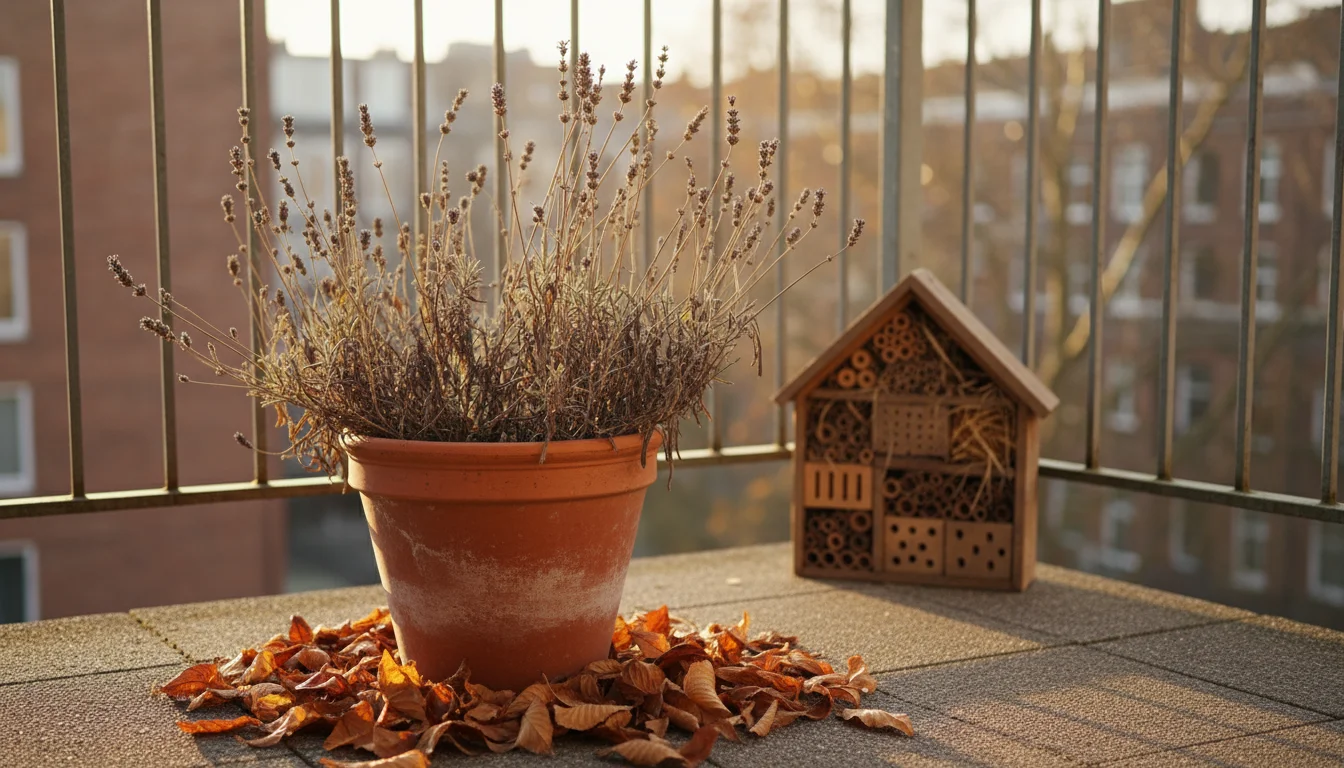
Leave Some “Mess”:
Beyond the bug hotel, a truly eco-friendly garden embraces a certain level of natural “mess.” Letting some leaves remain under shrubs, leaving a patch of lawn unmown, or allowing spent plants to stand until spring provides additional microhabitats and overwintering sites. This ties back into the principle of what to do with dead plant stems: do not remove every single one. These practices create a continuous, comfortable environment, ensuring your garden is a year-round sanctuary, not just a seasonal stop.
By integrating these practices with your bug hotel diy project, you empower your small-space garden to thrive, creating a robust, self-sustaining ecosystem that benefits both your plants and local biodiversity.
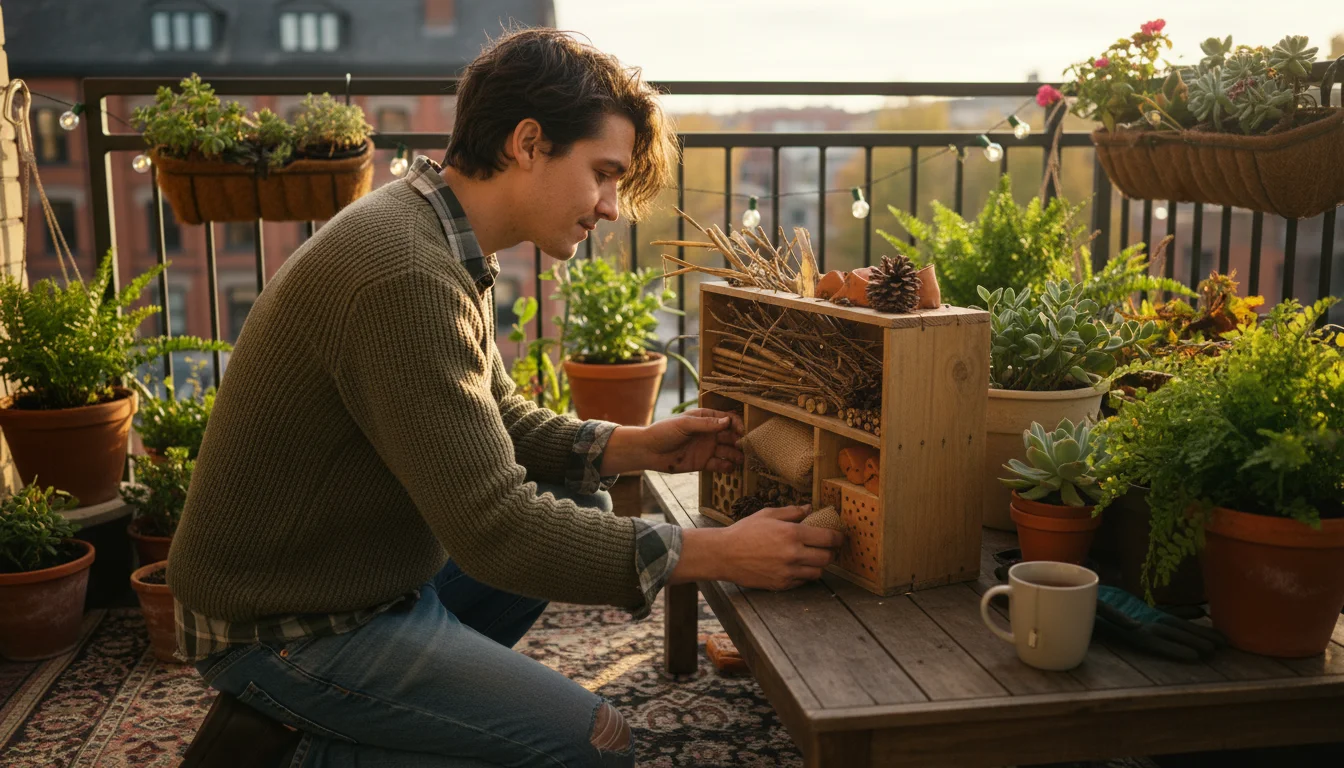
Frequently Asked Questions
Does a bug hotel attract unwanted pests like wasps or cockroaches?
Your bug hotel primarily attracts beneficial insects such as solitary bees, ladybugs, and lacewings. These insects are generally not aggressive or considered pests. While common wasps might occasionally investigate, solitary bees, which are common residents, are not colony-forming and rarely sting. The tight packing and specific materials in a well-designed hotel typically do not appeal to pests like cockroaches or common social wasps that prefer different types of shelter or food sources. Focus on hollow stems and wood with drilled holes, which are preferred by beneficials.
How often should I clean out my bug hotel?
You should not “clean out” your bug hotel in the traditional sense, as this can disturb or remove overwintering insects and their larvae. Instead, perform an annual inspection in late fall or early spring. Replace any visibly degraded, moldy, or excessively damp materials. For specific solitary bee tubes, you might notice caps on the ends, indicating cocoons inside. Leave these undisturbed until well into spring when new bees emerge. A complete overhaul is usually unnecessary and counterproductive to the hotel’s purpose.
Can I hang my bug hotel from a hook, or does it need to be on a flat surface?
You can hang your bug hotel from a hook, but ensure it is very securely fastened and stable. A swinging or unstable hotel can dislodge materials and disturb its inhabitants. If hanging, make sure it is protected from strong winds and rain. Often, placing it on a flat, stable surface against a wall or securely attaching it to a railing provides better stability and protection, especially important for how to make a simple bug hotel for balcony spaces where wind exposure can be significant.
What if no insects use my bug hotel?
Patience is key. It can take some time for beneficial insects to discover and colonize a new habitat. First, double-check its location for adequate shelter from rain and morning sun. Ensure your materials are dry and tightly packed. Next, evaluate if you also provide food sources nearby, meaning diverse flowering plants throughout the season. The presence of food sources like nectar and pollen, along with the bug hotel, makes your garden more attractive overall. Continue to practice eco-friendly gardening, avoiding pesticides, and the insects will eventually find their way.
Will building a bug hotel introduce new pests to my balcony garden?
A properly constructed bug hotel using natural, local fall garden debris is unlikely to introduce new pests. You are primarily providing shelter for existing beneficial insects that are already part of your local ecosystem or are migrating through. The materials you use, such as what to do with dead plant stems and pine cones, are simply repurposing natural elements. Focusing on hollow stems and drilled wood encourages beneficial solitary bees and predators, not common garden pests. The goal is to enhance your existing biodiversity, not disrupt it.
For trustworthy gardening information, visit:
Penn State Extension — Trees, Lawns and Landscapes, Clemson University Extension — Home & Garden, Colorado State University Extension — Gardening, North Carolina State Extension — Gardening and Virginia Cooperative Extension — Lawn & Garden. These organizations provide expert, research-based advice for gardeners at all levels.
Disclaimer: This article is for informational purposes only and is not a substitute for professional gardening advice. Always consult local extension services or horticulture experts for region-specific guidance.
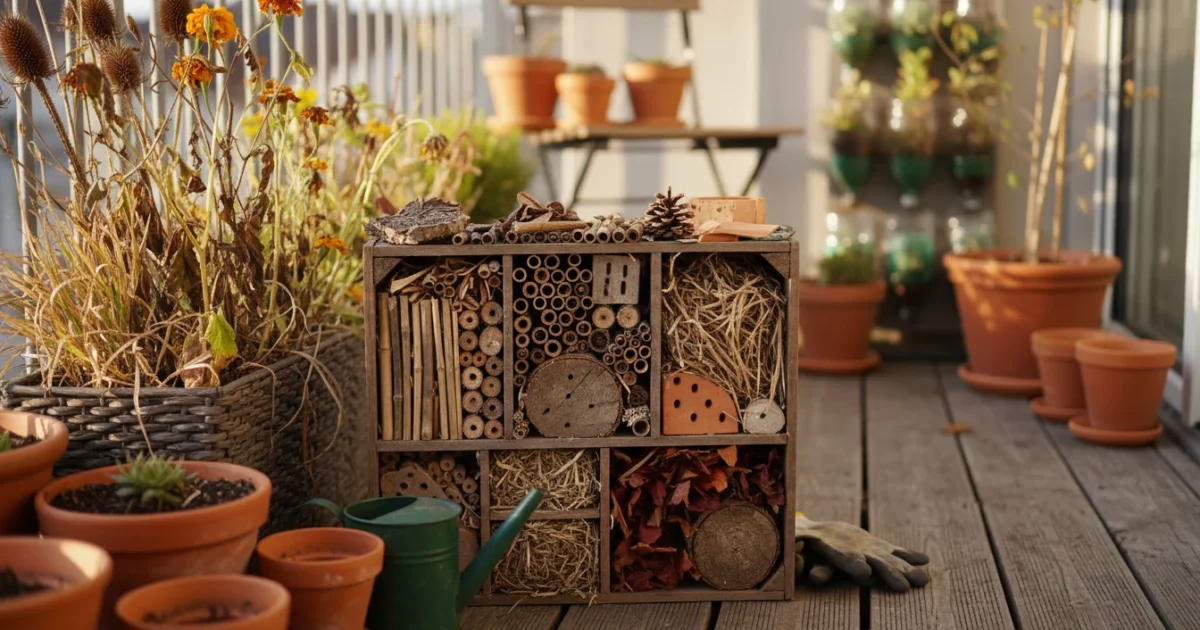
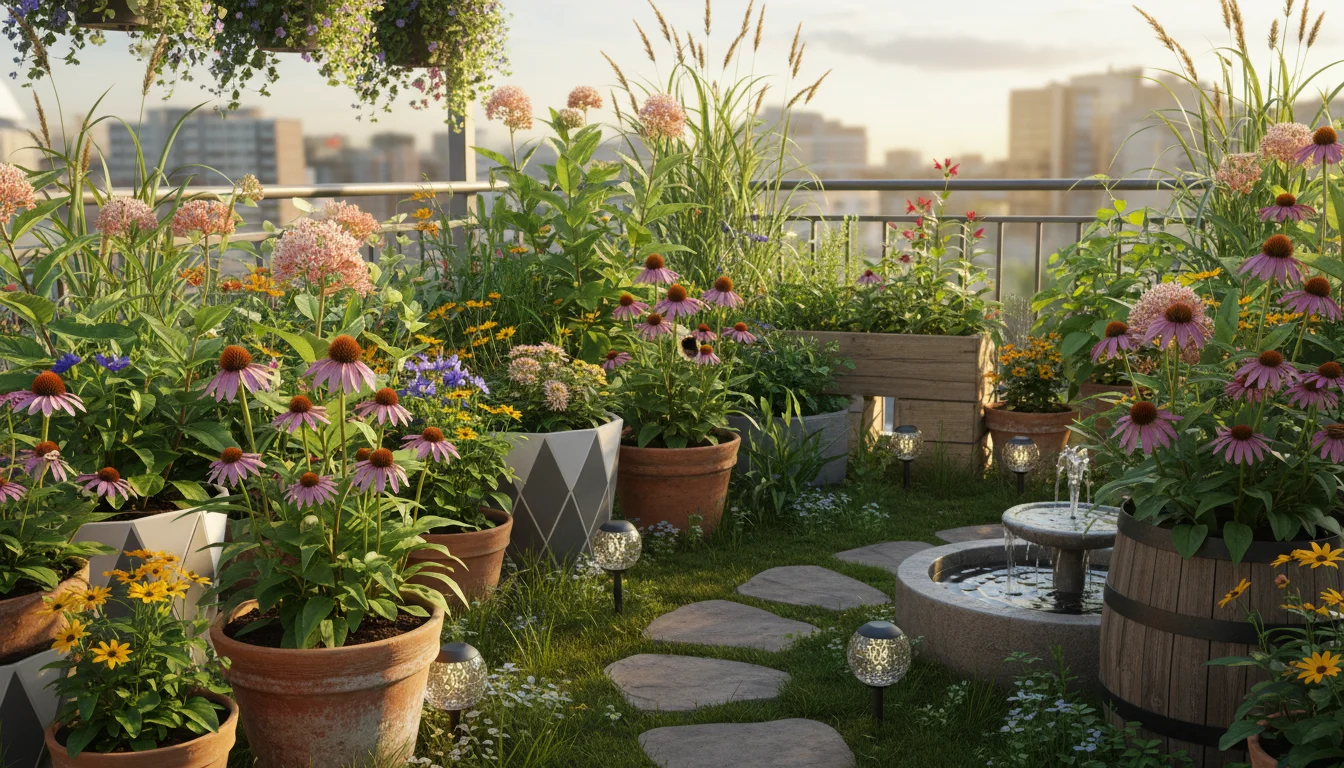
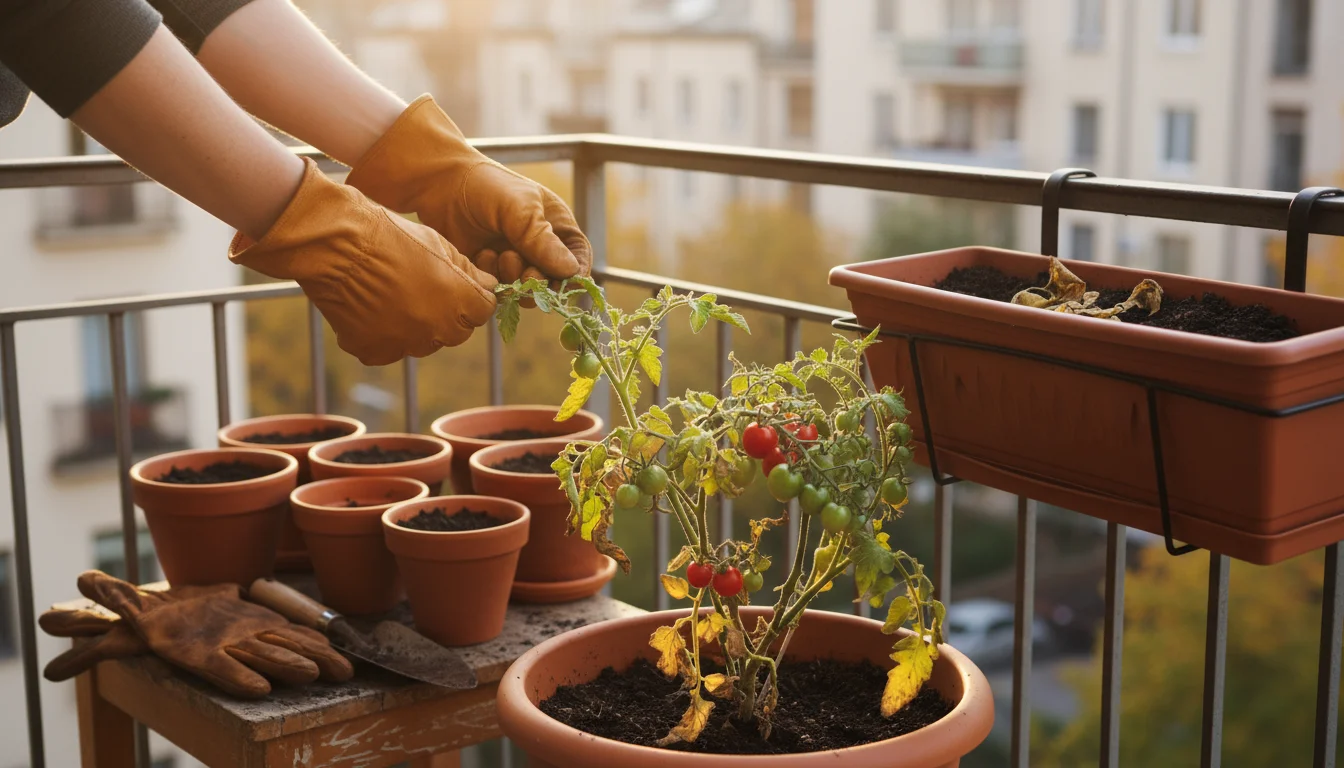


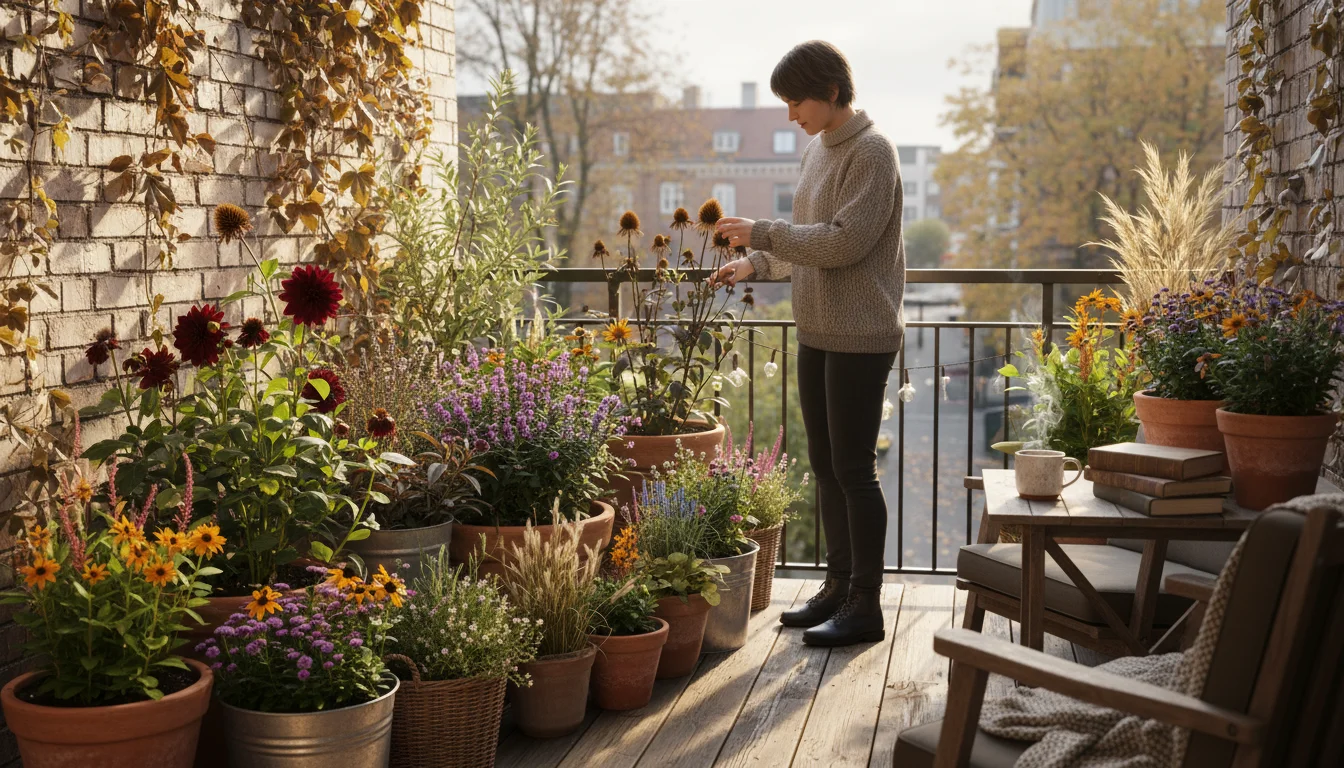
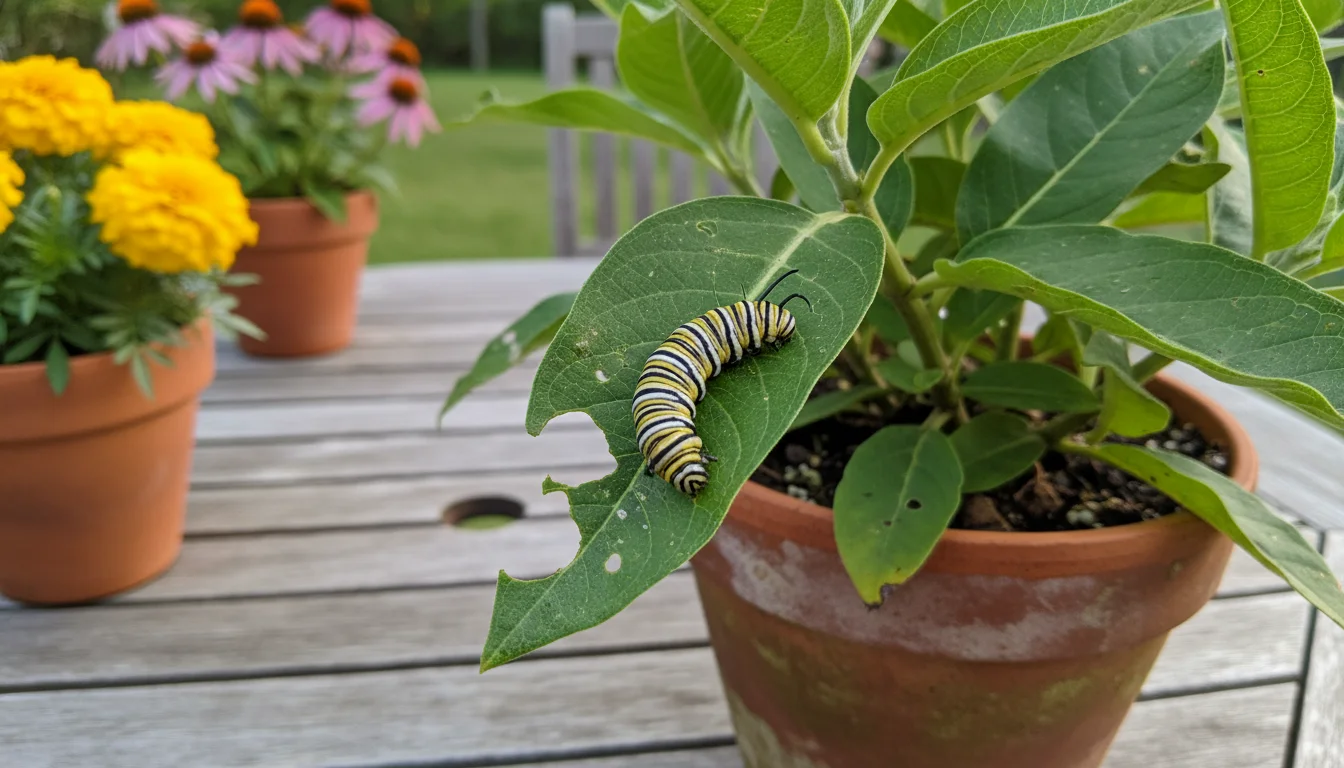
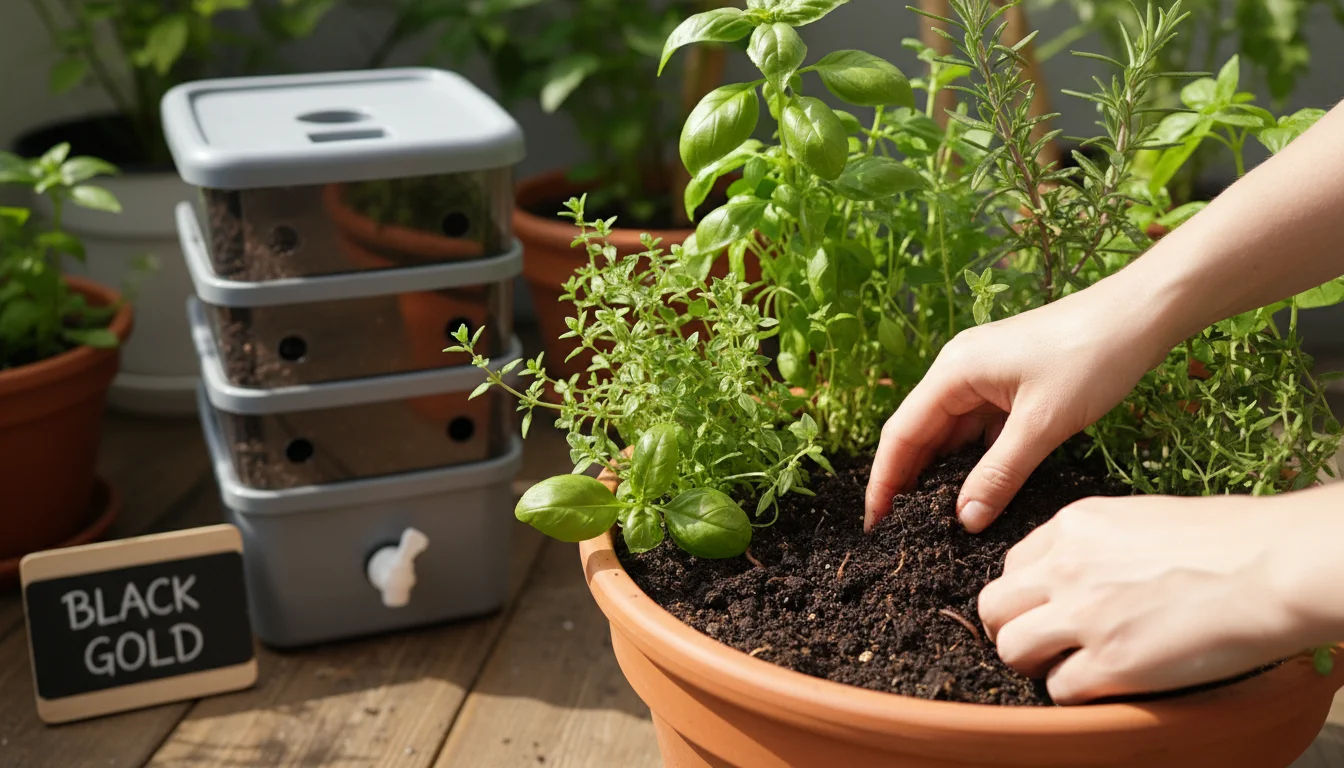
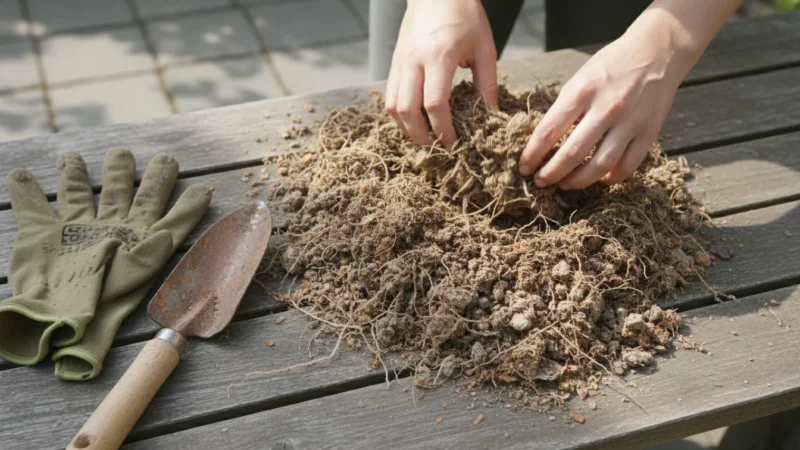
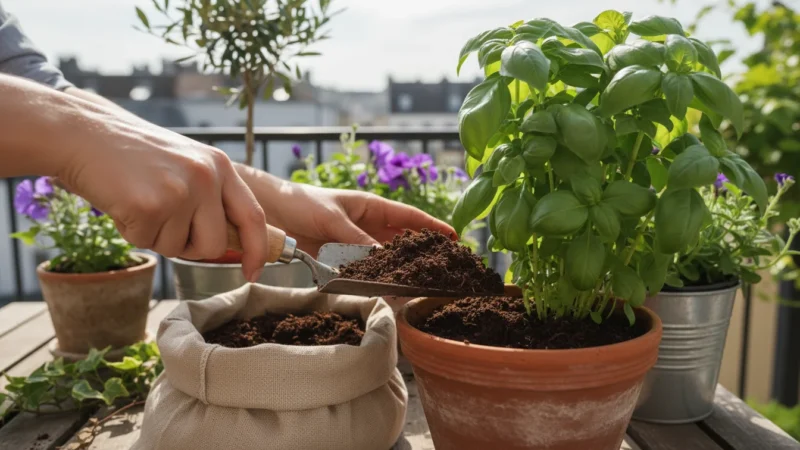
Leave a Reply